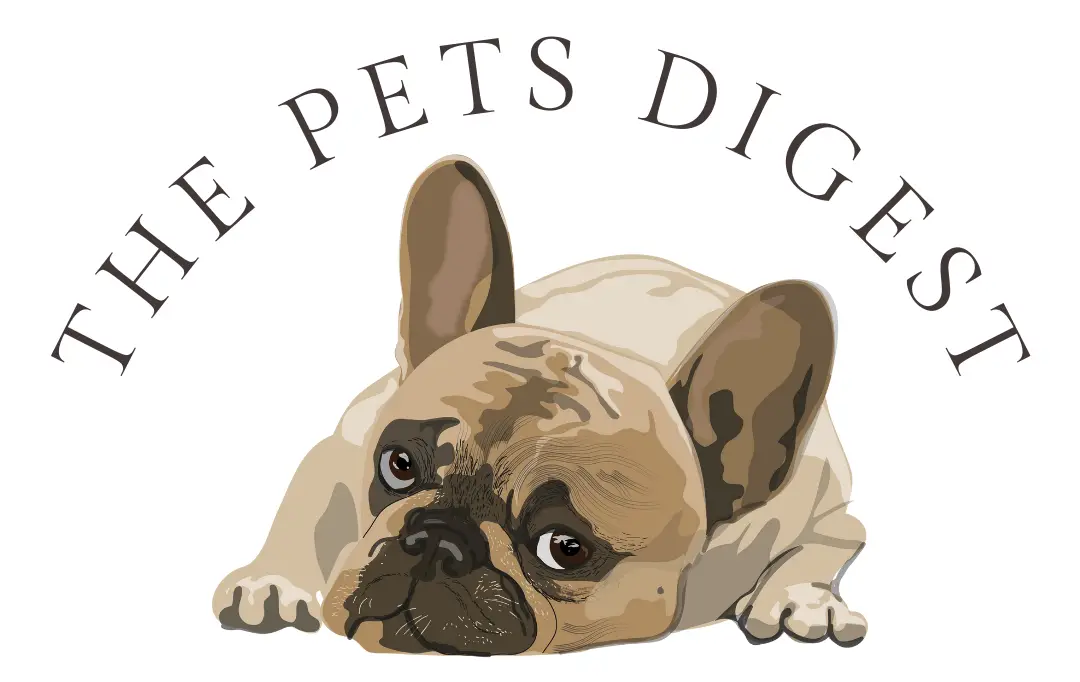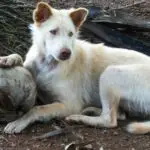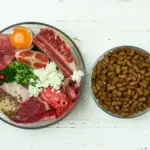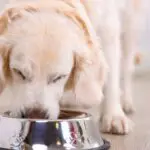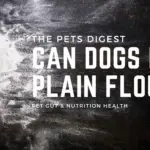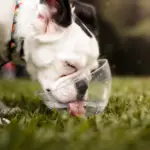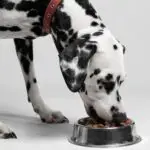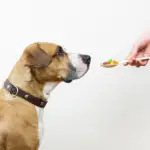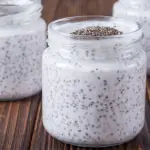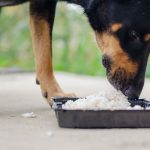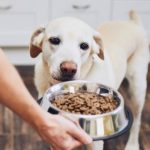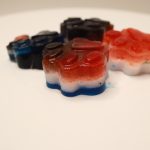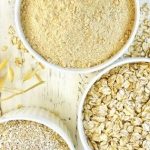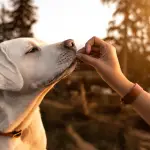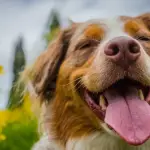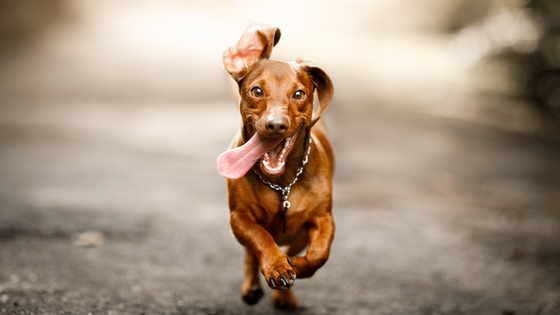Many pet owners have concerns about their dog eating grass as it will sometimes lead to vomiting. Here are some things you should know if you have a dog that seems to love eating grass!
Why does my dog eat grass?

We will start off by letting you know that there is no scientific reason that has been identified as to why dogs eat grass. It is most likely something that dogs have done for hundreds of years and therefore won’t stop any time soon.
Sixty-nine percent of dog owners state that their dog eats grass according to an IAMS poll and according to this article published in the Applied Animal Behaviour Science journal nearly 80% of dogs who have access to grass will occasionally eat it.
Here are a couple of speculations as to why dogs may eat grass
- They enjoy the taste: It could be that dogs enjoy the sweet taste of som grasses or even the texture and feel of the grass. Some of dog’s favorite grasses to eat are quackgrass, and/or twitch grass and stickyweed. Many dogs seem to like newly emerging grass that comes with spring the best
- They need roughage: grass is actually a good source of fiber and if your dog is lacking roughate it can actually decrease their ability to digest food effieciently.
- They are sick: while not proven, many pet parents believe their dogs eat grass to make themselves vomit and get whatever is bothering their stomachs out. Dogs can regurgitate on their own volution due to the types of muscles i their esophaguses. But it should also be noted that not all dogs throw up after eating grass
- All of the above: Since we just don’t know for sure, your dog could eat grass at different times for various rerasons
Does it mean my dog is sick if they eat grass?
As stated above, not necessarily, many people think that when their dog eats grass they are sick and need to relieve their upset stomachs. There have been some studies that have deemed this to be untrue in all cases. Studies actually show that less than 25% of dogs vomit after eating grass and only 10% show signs of illness prior to eating grass. While this may be true for a small number of dogs, the majority of dogs do not present as ill before or after eating grass. (source)
Is my dog missing something in his/her meals if they eat grass?
Not likely, as stated above, some dogs may need a bit more roughage and instinctively reach for the nearest blade of grass, but if you are feeding an over-the-counter diet your pup is most likely receiving all the nutrients they need. However, if you notice your pup eating dirt, rocks, or feces they may be suffering from pica. Pica can be the result of needing a more nutritious diet or some other underlying issue.

When is eating grass dangerous for dogs?
- Treated grass: Grass that has been treated with a pesticide or weed killer can be extremely toxic to dogs.
- Parasites: If the grass that your dog is eating was once covered in feces or urine from another canine, it is possible that they can pick up worms and other parasites like giardia.
- Toxic grasses: Some ornamental grasses are toxic to pets
What can i do to stop my dog from eating grass?
Since dogs are not strictly meat eaters or true carnivores they will need some added plant materials to their diets. In the wild, approximately 11-47% of wolves eat grass and it is actually normal for them to do therefore stopping it will be extremely difficult and could be counterproductive in the long run.
However, if you just cannot handle the fact that your dog eats grass you can always try training them to deter them from partaking. Of course, this works best if your dog is food motivated as you can simply offer them a small treat each time you notice them going for a blade of grass. You can take the treats with you on walks and to the dog park. If your dog is affection driven give them lots of love when they listen to the command to not eat the grass and redirect them.
How do I keep my dog safe when eating grass?

Here are a couple of things you can do to ensure your dog is safe when eating grass
1. Don’t let them eat grass outside of your yard
When you are on walks or especially at places where dogs congregate like the dog park try to keep your dog from eating the grass. As discussed earlier there is always the possibility that they could pick up tiny, microscopic parasites when eating the grass, and the chances of this occurring increase when more dogs are (or have been) in the vicinity
2. Don’t treat your grass
If you must treat your grass make sure your pet doesn’t eat it as the poisons that are in many pesticides and lawn care applications can really make your dog ill
3. Grow their own grass
Many pet owners opt to grow grass for their dogs this way they won’t have to worry about them eating it outside
4. Keep them away
Keep your pup away from grasses that are poisonous, like pampas and grass palm to dogs and if you have a grass lover don’t plant them in your back yard!


